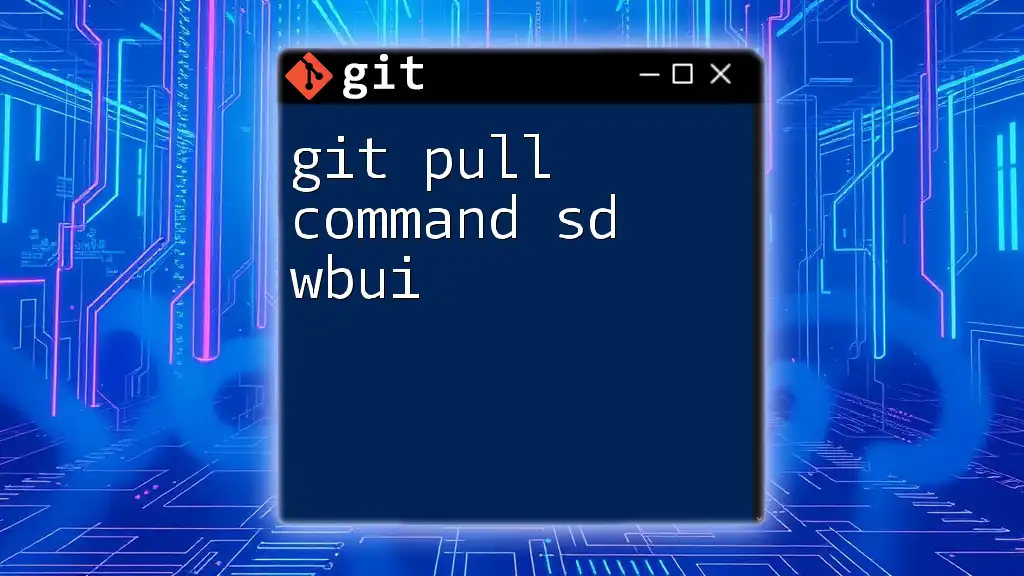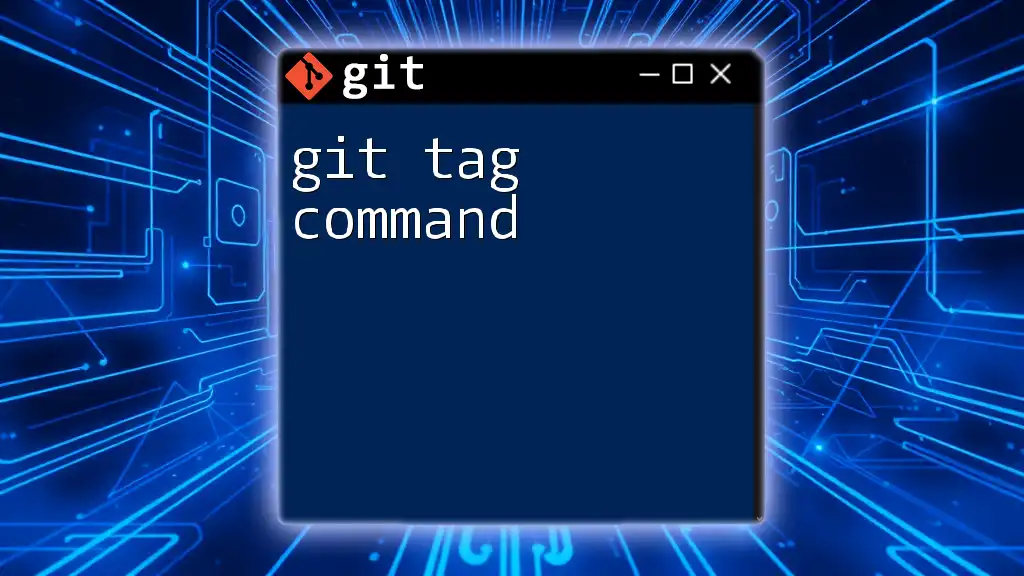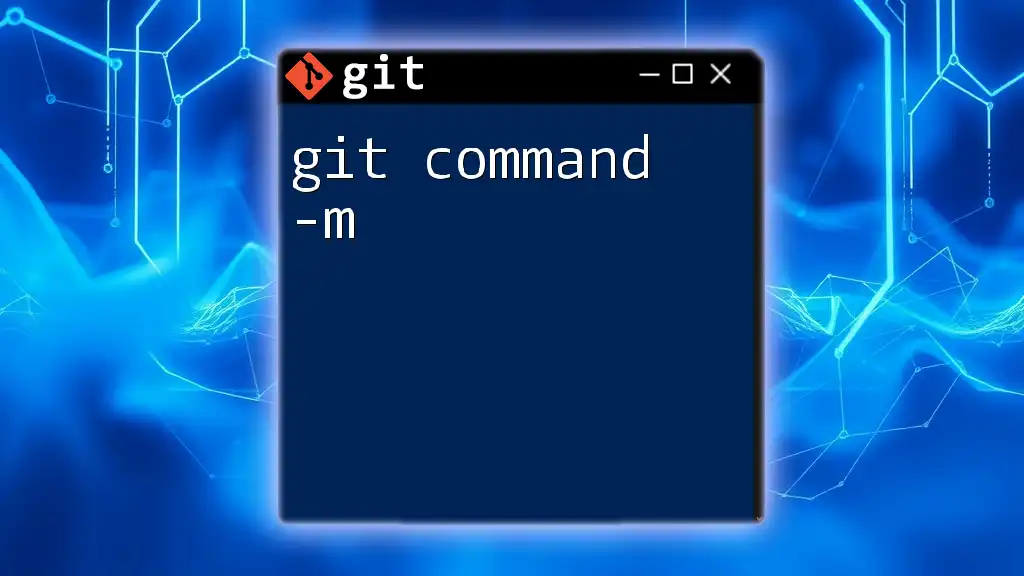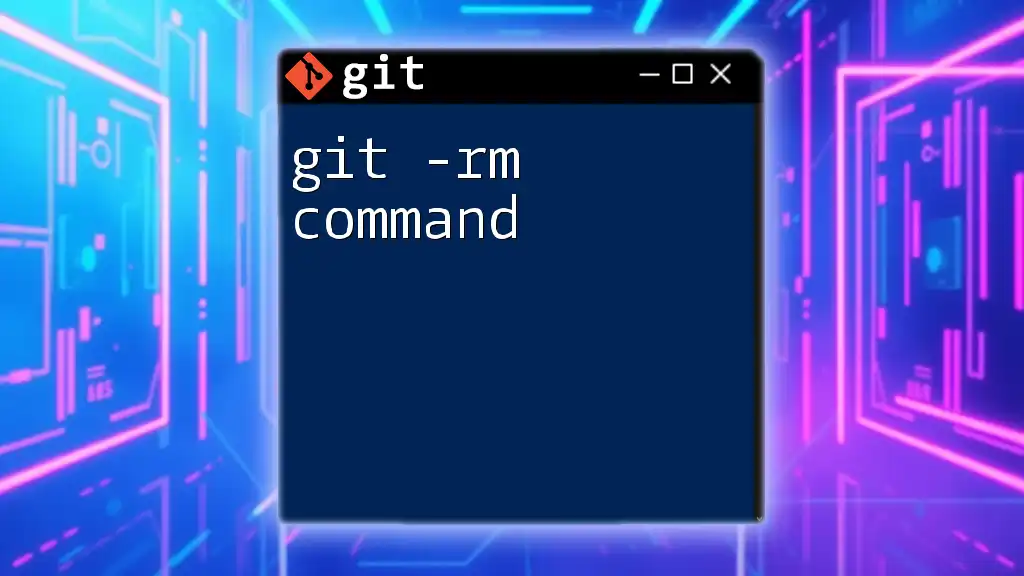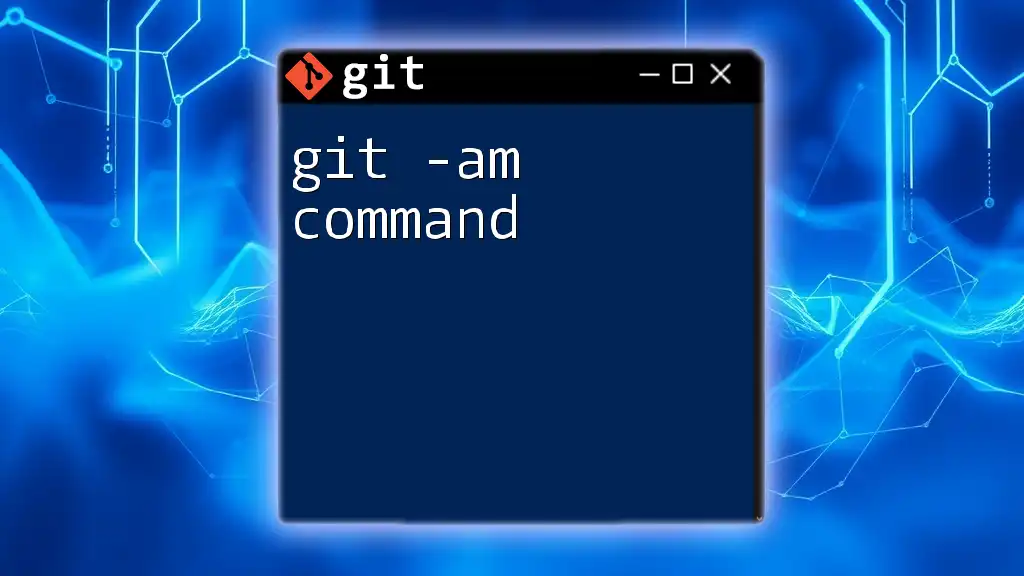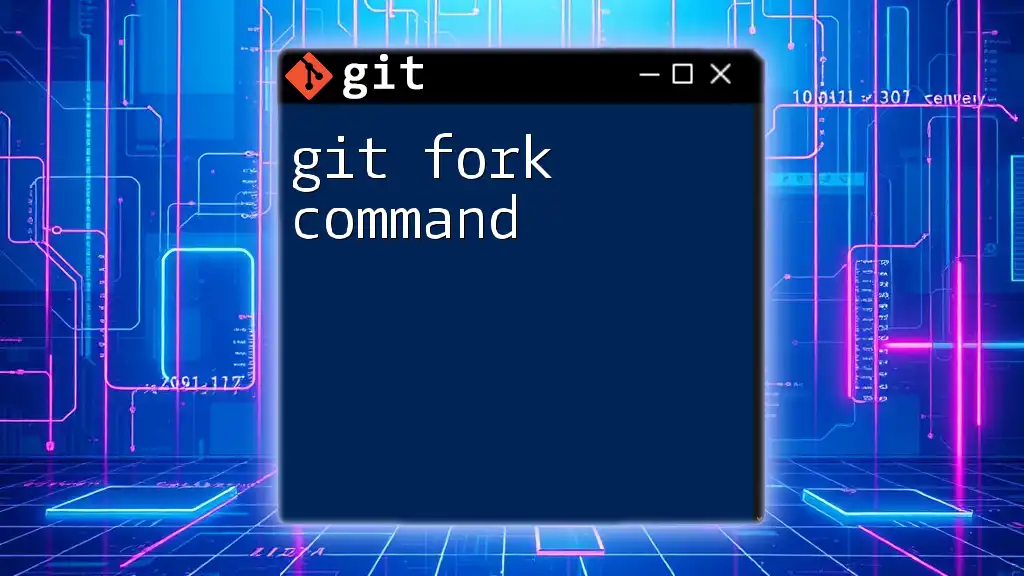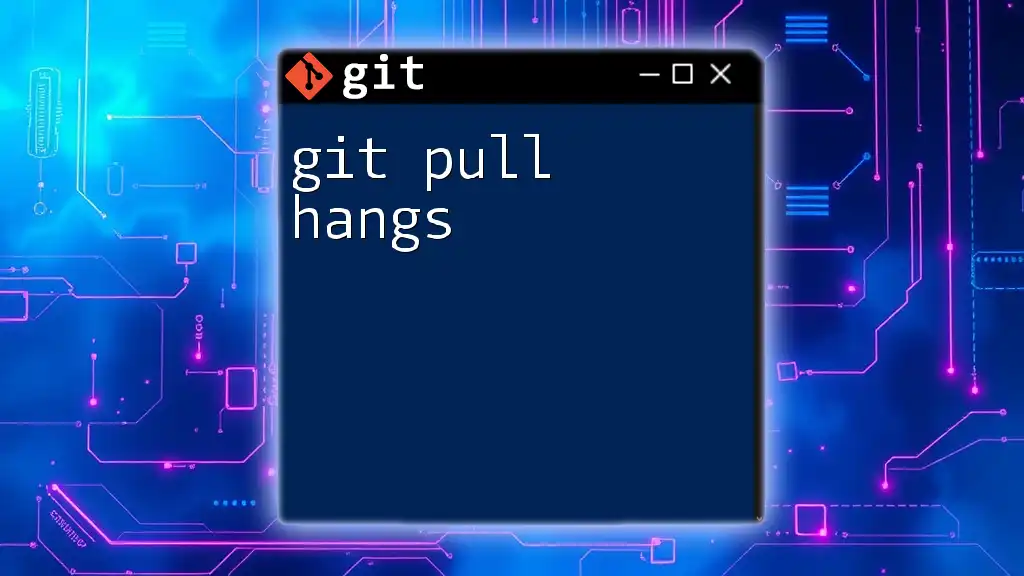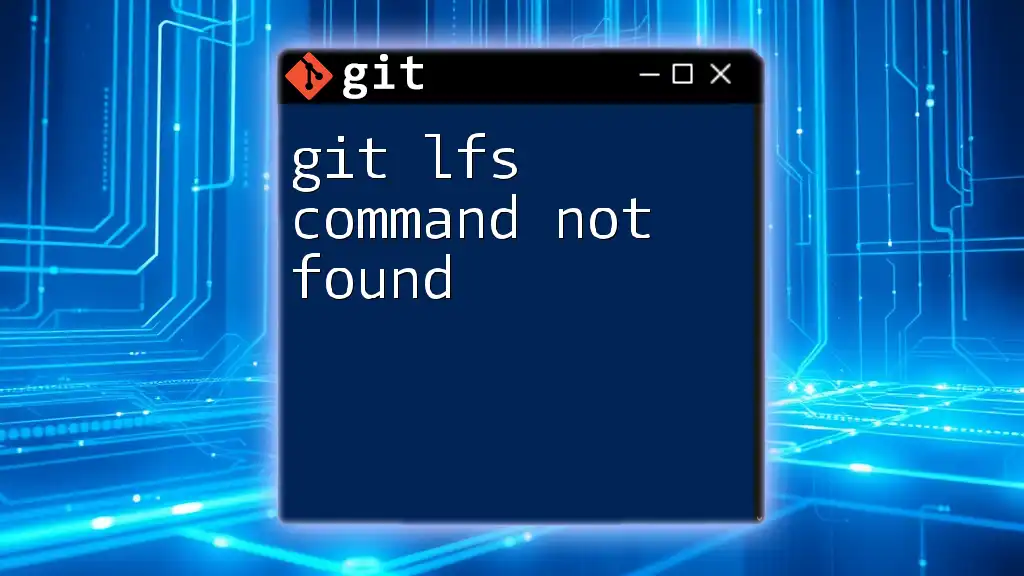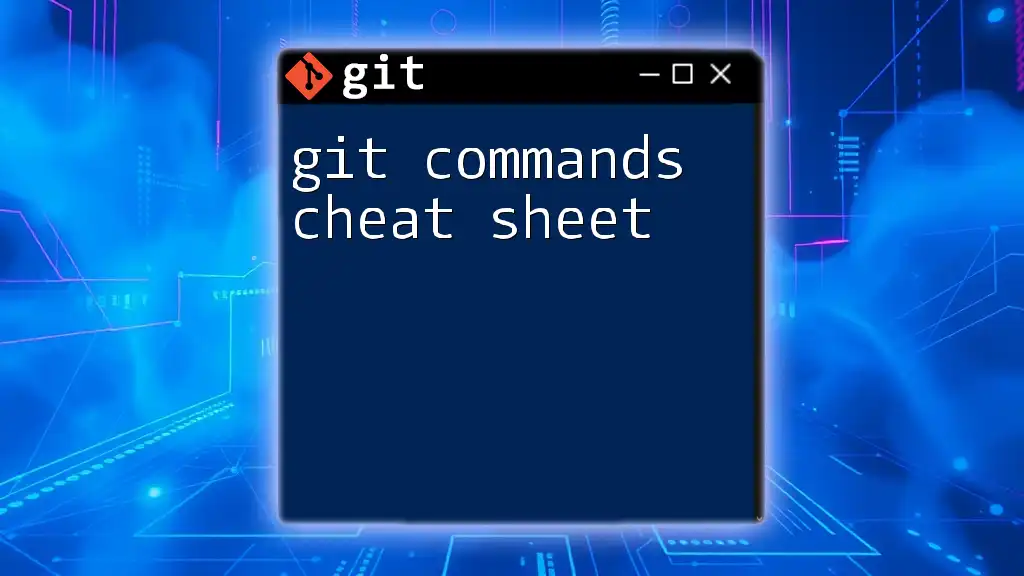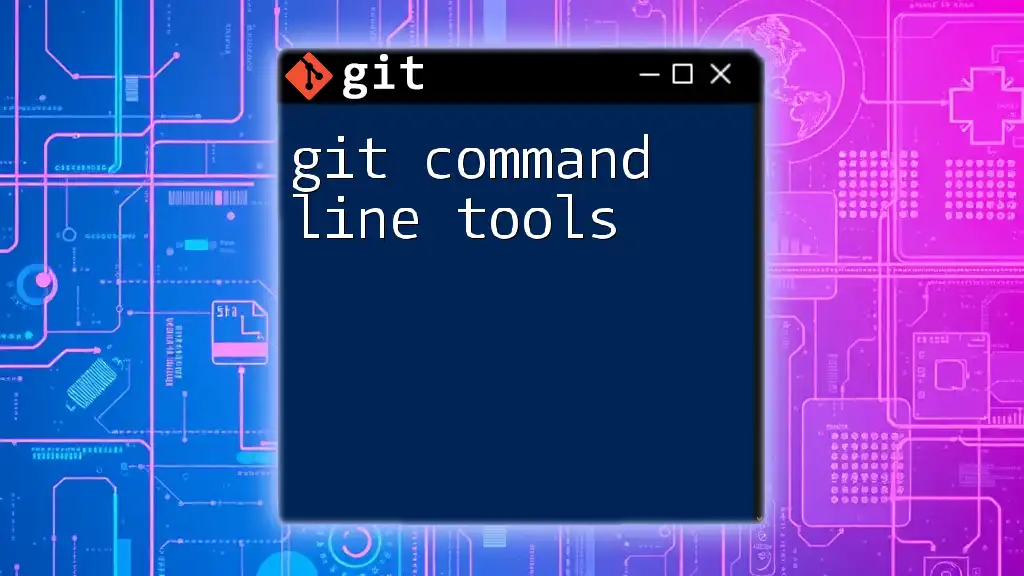The `git pull` command is used to fetch changes from a remote repository and merge them into your current branch, ensuring your local copy is up-to-date with the latest version.
git pull origin main
Understanding the Basics of `git pull`
What is `git pull`?
The `git pull` command is a critical tool in the Git version control system that allows users to update their local repository with changes from a remote repository. Essentially, it fetches updates from a specified remote branch and automatically merges them into the current branch. It's worth noting that `git pull` combines two fundamental commands: `git fetch`, which retrieves changes from a remote, and `git merge`, which integrates those changes into your work environment.
Unlike `git fetch`, which merely updates your local copy of a repository, `git pull` hands you the changes on a silver platter, merging them directly into your branching history. This makes it especially vital for collaborative environments where multiple team members are working on the same codebase simultaneously.
Syntax of `git pull`
The syntax of the `git pull` command is straightforward:
git pull [options] [repository] [refspec]
Common options include:
- `--rebase`: Rebase the current branch on top of the upstream branch after fetching.
- `--no-commit`: Do not create a commit right after the merge.
Understanding this syntax is essential as it lays the foundation for leveraging more advanced options like `--sd` and `--wbui`.
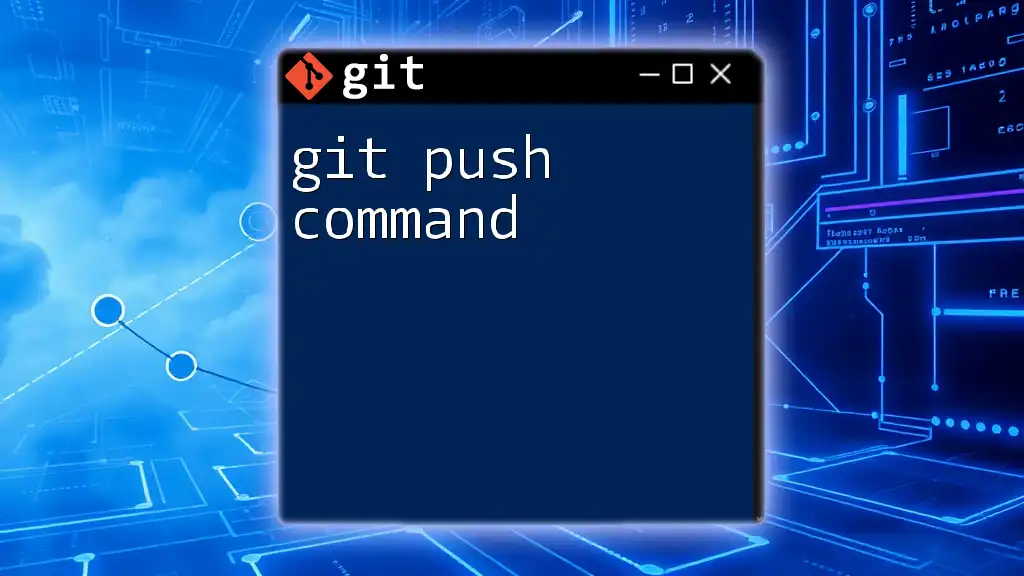
Exploring the `--sd` Option
What Does `--sd` Stand For?
The `--sd` option in the `git pull` command stands for "squash merge strategy." This strategy enables users to condense multiple commits from the remote branch into a single commit in the local branch. This is particularly useful when you want to keep your commit history clean and maintain clarity in your code changes, especially after merging several feature branch updates.
Practical Examples of Using `--sd`
Here’s how you can use the `--sd` option:
git pull --sd origin main
In this command:
- `git pull`: This initiates the pull operation.
- `--sd`: This specifies the squash merge strategy.
- `origin`: This refers to the remote repository.
- `main`: This is the branch from which you want to pull changes.
When you execute this command, Git will pull changes from the `main` branch of the `origin` remote repository, merging them into your current branch as a single commit. This can greatly simplify the review process in code changes and improve your project’s history.
Potential Issues with `--sd`
While the `--sd` option can be a powerful ally, it is not without its pitfalls. One common issue that may arise is conflict during the merge. In such cases, Git will pause the process and prompt you to resolve these conflicts manually. Once conflicts are resolved, you can complete the merge by staging the resolved files and committing the changes.
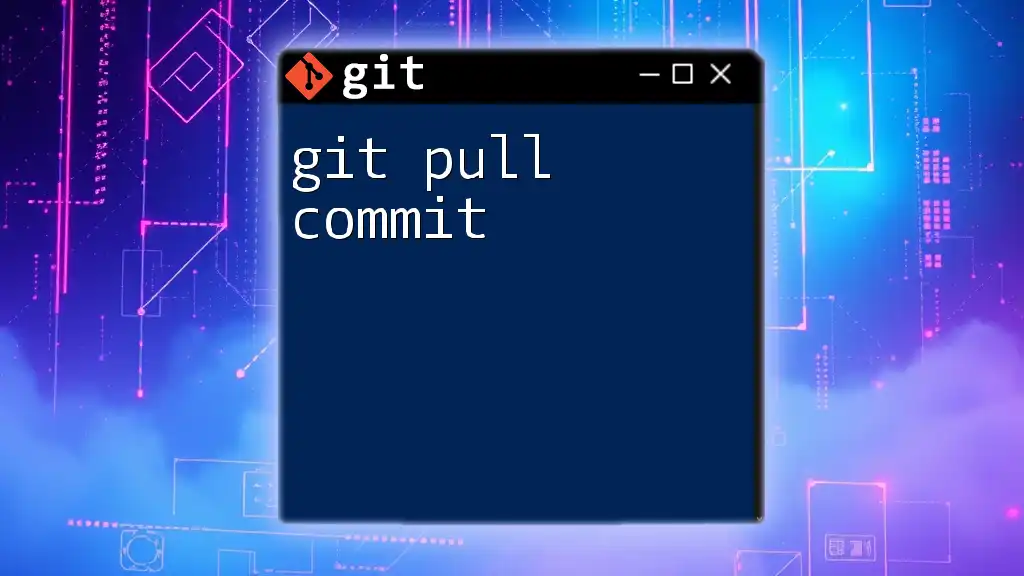
Diving into the `--wbui` Option
Understanding `--wbui`
The `--wbui` (Write Back User Interface) option allows Git to provide a more user-friendly experience during specific operations. When used with `git pull`, it can enhance how the changes are presented and navigated within the command-line interface, making it easier for developers to visualize what has been pulled in and possibly prompting them for further actions.
Demonstration of `--wbui` in Action
Here is a command that includes the `--wbui` option:
git pull --wbui
By running this command, Git fetches and merges changes, while the `--wbui` option enables an interactive view of the changes. This feature is particularly advantageous for users who prefer a more guided experience, as it may provide prompts and feedback on what changes were merged.
FAQs Related to `--wbui`
Some common questions that arise regarding the `--wbui` option include:
-
Is `--wbui` mandatory?
No, it is not mandatory; however, it can enhance your interaction with Git. -
Can it affect performance?
While `--wbui` offers additional features, it may have a minor impact on speed due to the extra information being processed.
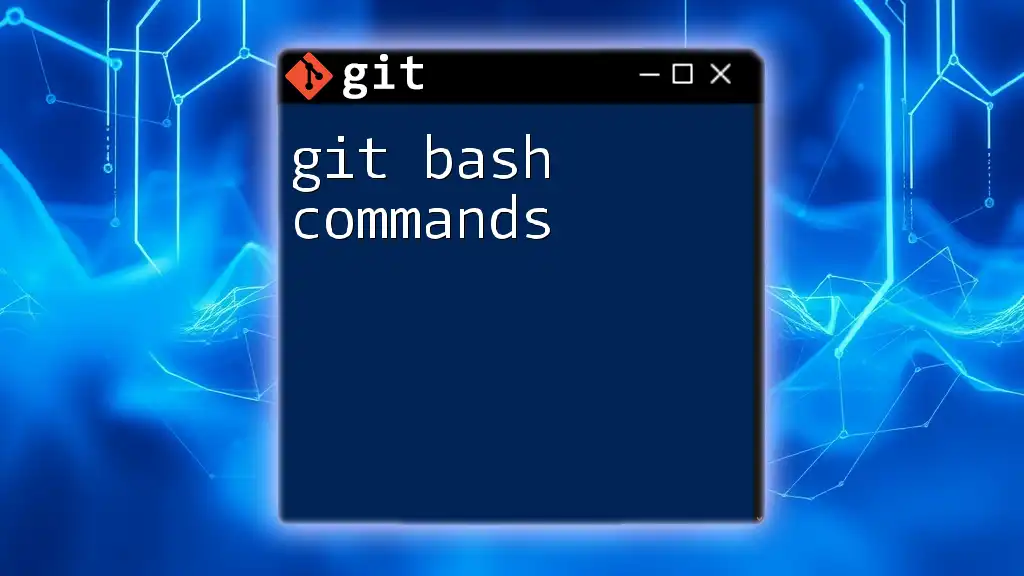
Combining `--sd` and `--wbui`
When to Use Both Options
Using both the `--sd` and `--wbui` options can streamline your workflow. For example, combining these two options allows you to pull updates from a remote repository and view them clearly as a single commit while taking advantage of the user-friendly interface that offers more clarity on the changes made.
Example of a Combined Command
Here’s how to combine these options effectively:
git pull --sd --wbui origin feature-branch
Each part of this command serves a significant role:
- `git pull`: Initiates the pulling process.
- `--sd`: Ensures that the fetched commits are squashed into a single one.
- `--wbui`: Enhances the user interface for better navigation through changes.
- `origin`: Refers to the remote repository.
- `feature-branch`: The specific branch from which the updates are being pulled.
By incorporating both options, you prioritize a cleaner commit history and improve the visibility of changes, which ultimately fosters better collaboration among developers.
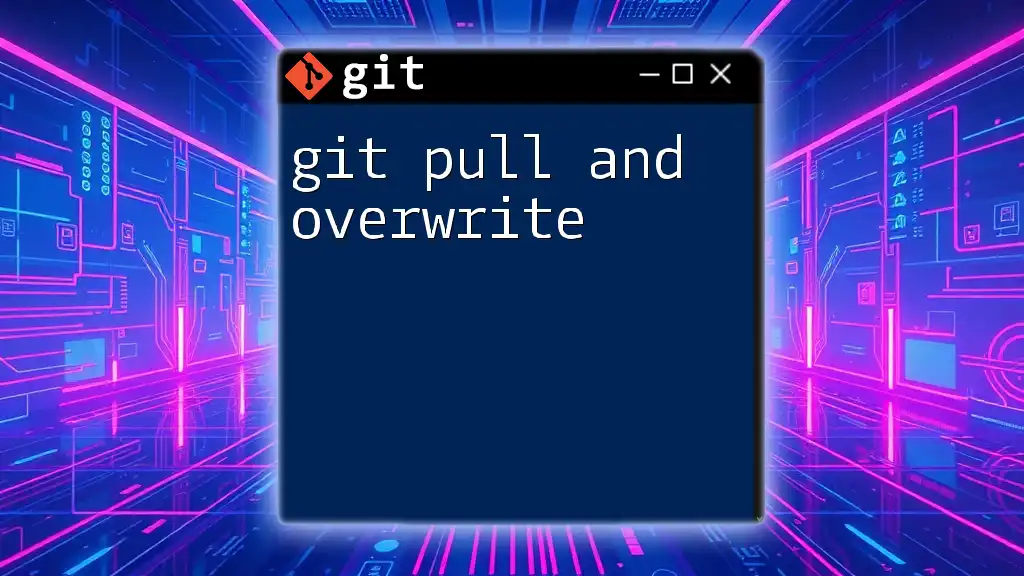
Best Practices for Using `git pull`
Tips for Effective Pulling
To maximize your use of `git pull`, consider these tips:
- Regularly communicate with your team about when you plan to pull changes to avoid conflicts.
- Pull updates frequently to minimize the changes you need to merge at once.
Common Pitfalls
Avoid these common pitfalls when executing `git pull`:
- Not reviewing the status of your branch before pulling can lead to unexpected merges.
- Ignoring merge conflicts may lead to unresolved issues that complicate the commit history.

Troubleshooting
Common Errors with `git pull`
Some frequent problems include:
- Authentication errors when connecting to the remote repository. Make sure you have the correct credentials configured.
- Diverging branches, which could indicate that your local branch has new commits that the remote branch doesn't have. In such cases, you'll have to resolve differences manually.
How to Recover from Mistakes
If you run into issues after using `git pull`, you may want to:
- Use the command `git reset HEAD~1` to undo the last commit.
- Leverage `git reflog` to view the history of actions and potentially recover lost commits.
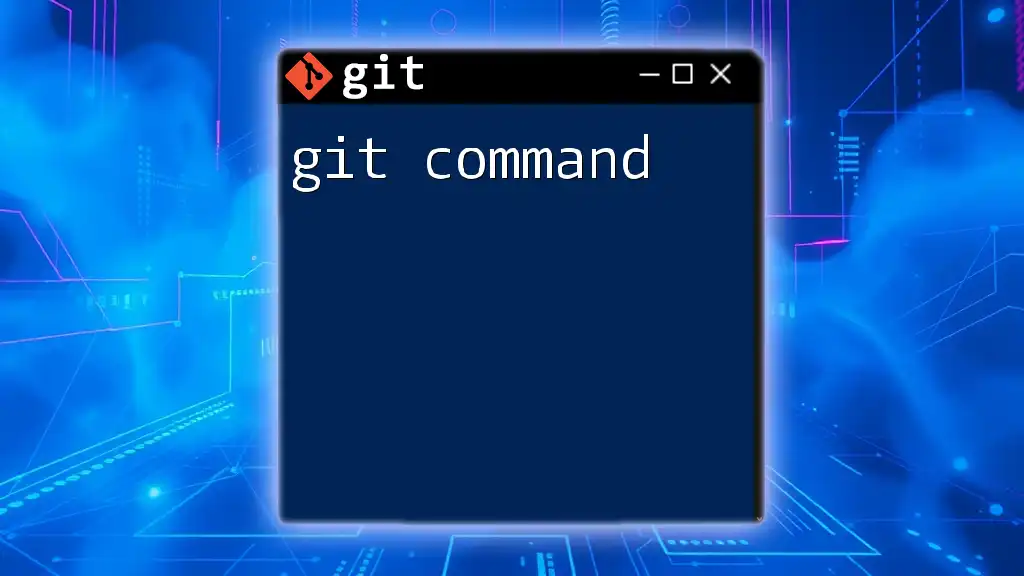
Conclusion
The `git pull` command, especially with the `--sd` and `--wbui` options, is indispensable for streamlining your version control process. By understanding how to effectively use these commands, you can enhance your coding workflow, maintain a tidy commit history, and foster better collaboration with your team. Don’t hesitate to practice these commands regularly to become proficient in managing your Git workflow.
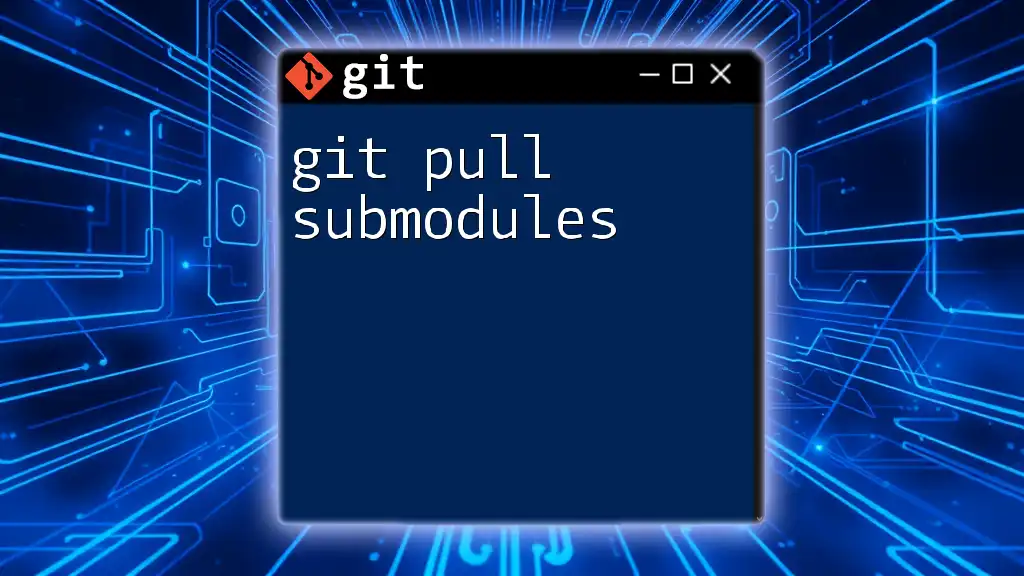
Additional Resources
Explore further through official Git documentation, instructional videos, and community forums to deepen your understanding and troubleshoot issues. You can never go wrong with continued learning in the ever-evolving landscape of version control!

